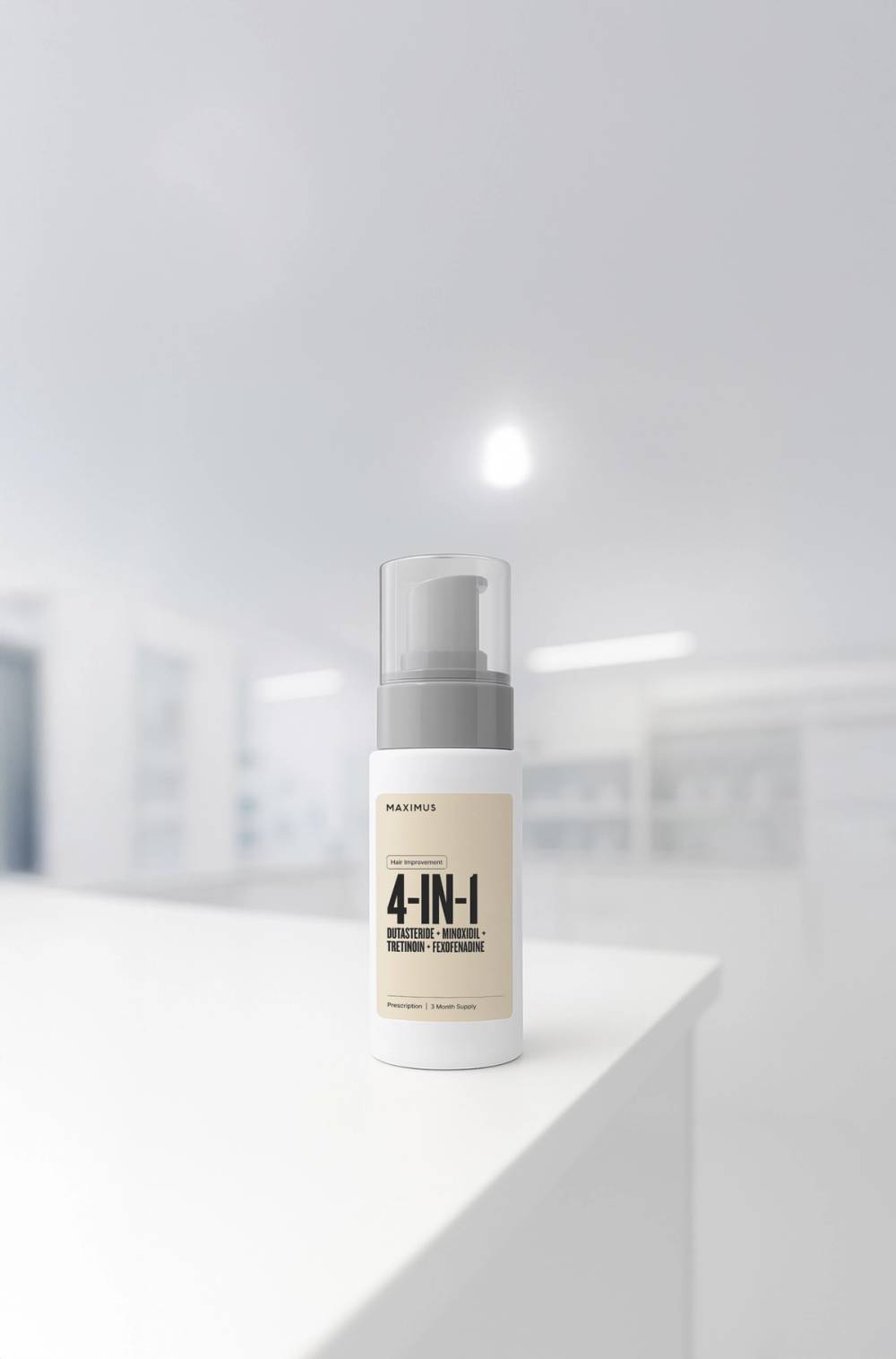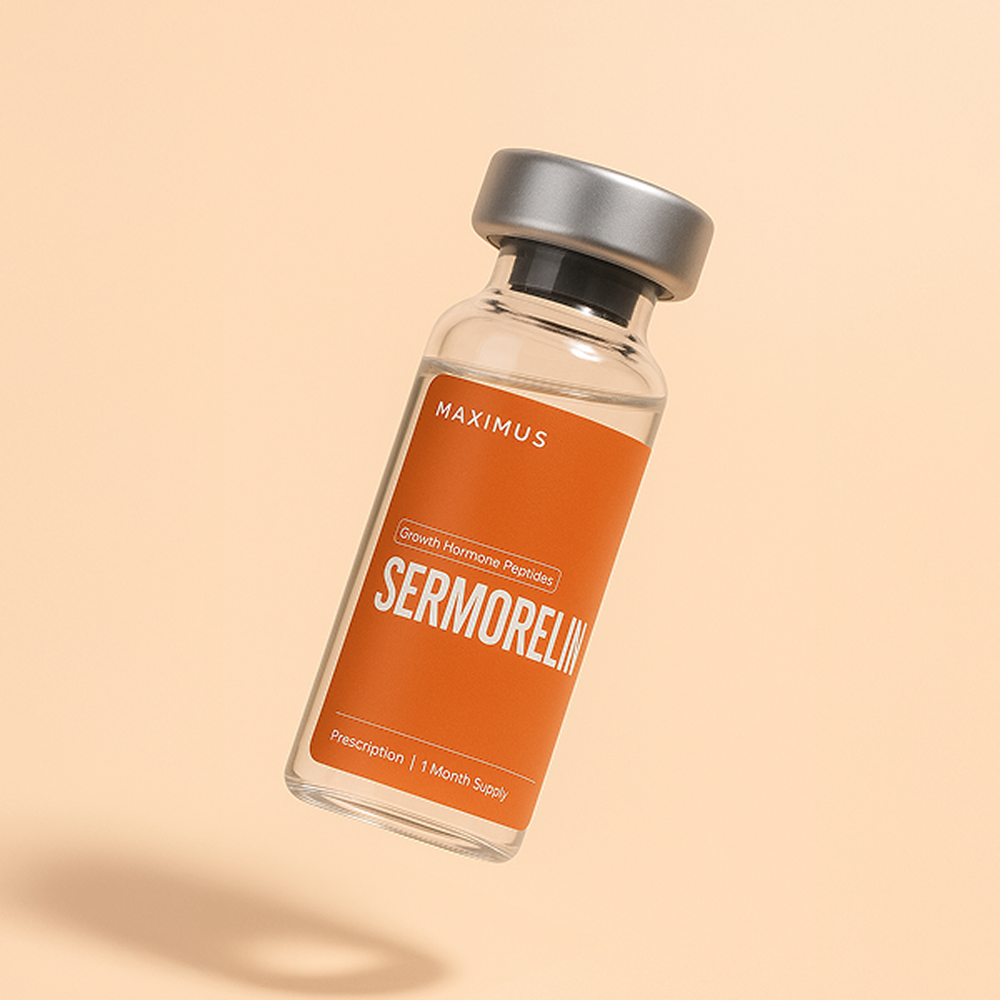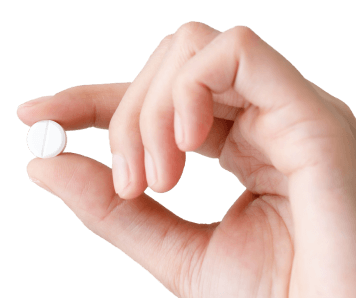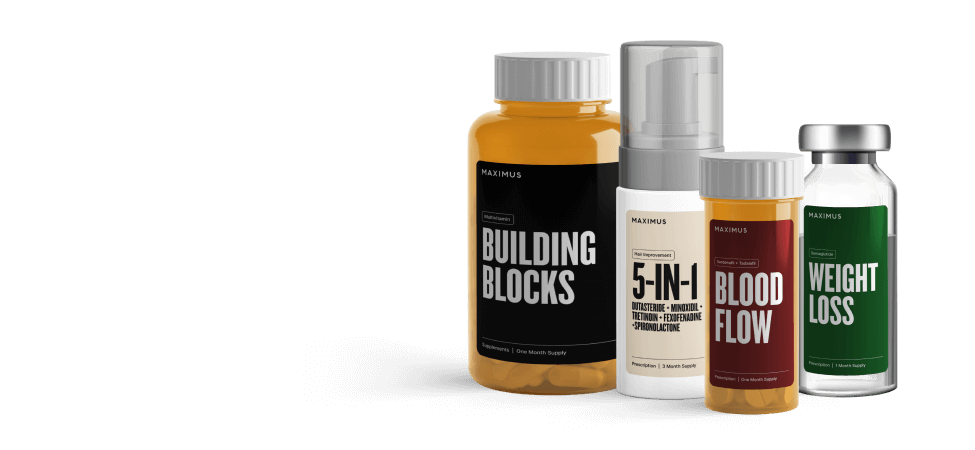Introduction
For men who aren’t fans of needles or find gels and creams too messy, oral testosterone replacement therapy (TRT) can be an appealing alternative. Some studies show the method to be just as advantageous as other modalities, potentially even replacing injectables and transdermal methods entirely. But are there any downsides to oral testosterone pills? And how does it compare to other oral medications used to improve testosterone, such as Clomid® or enclomiphene?
Read on to find out how you can take testosterone orally, how it compares to other testosterone products, and side effects to consider.
Key takeaways:
- Oral TRT is a prescription-only medication used to treat symptoms of hypogonadism, or low testosterone. Like other forms of TRT, they shut down the body’s ability to make natural testosterone by replacing it synthetically.
- Some of the newer oral TRT products include Tlando, Jatenzo, and Kyzatrex. Unlike the older generation of oral TRT medications, all of these products bypass the liver and are absorbed by the lymphatic system.
- Side effects of oral TRT include increased blood pressure, GI upset, headaches, upper respiratory tract infections, and potential fertility issues.
- Though oral TRT is not as effective as TRT injections, it does carry fewer side effects. However, oral TRT can be made more effective if combined with TRT alternatives like enclomiphene citrate.
What is Oral TRT?
Oral TRT is a prescription-only medication used to treat symptoms of hypogonadism, or low testosterone, such as decreased libido, fatigue, erectile dysfunction, and loss of lean body mass. Like other forms of TRT–injections, pellets, patches, and gels–oral TRT shuts down your body’s ability to make natural testosterone and replaces the hormone synthetically.
The first oral form of testosterone was released in 1935 (oral methyltestosterone), but the medication was discontinued after being associated with liver damage and an increased risk of heart complications. The next formulation required an intake of high-fat foods to maintain efficacy. The newer generation of oral testosterone undecanoate products now have a distinctive self-emulsifying drug delivery system (SEDDS), which increases the solubility and bioavailability of the testosterone without having to consume a high-fat meal or risking damage to the liver.
What products exist within Oral TRT?
Some of the newer oral TRT products include Tlando®, Jatenzo®, and Kyzatrex®. All of these medications bypass the liver and are absorbed by the lymphatic system. Here’s what you should know about these oral testosterone options:
- Tlando: Using this oral TRT method has been shown to restore testosterone levels in hypogonadal men to the normal range while increasing free testosterone. In one 2021 study, 80% of subjects who received a 450 mg daily dose without dose adjustment achieved normal testosterone levels within 24 days. And while older types of oral TRT medications were found to damage the liver, Tlando has been shown to actually improve liver health by reducing fatty liver disease in hypogonadal men. However, Tlando is associated with side effects, including an increased risk of cardiac events due to the medication’s ability to raise blood pressure.
- Jatenzo: Clinical studies of Jatenzo found more impressive results than with Tlando. The medication raised testosterone levels to within the normal range in 87% of men within 24 days. And like Tlando, Jatenzo has not been shown to cause liver dysfunction, though like Tlando, it can raise blood pressure.
- Kyzatrex: Kyzatrex is the most effective oral testosterone method in this group. Clinical trials have found that 88% of patients treated with Kyzatrex achieved a 24-hour mean plasma total testosterone concentration within the normal range on the final day of the study at day 90. Along with bypassing the liver, Kyzatrex also has minimal effects on blood pressure in patients not taking antihypertensive drugs, correlating with a lower risk of cardiac events.
Beyond increased blood pressure, other side effects reported with oral TRT include gastrointestinal upset, headaches, and upper respiratory tract infections. These effects rarely lead to discontinuation of treatment. And like other forms of TRT, oral testosterone may also lower your fertility, although perhaps not as severely as injectables, which are known to lead to azoospermia in many users. In one small study, 1 of 7 normal volunteers given oral TRT for 10-12 weeks became azoospermic, and the remaining showed suppressed or unaffected sperm counts. Meanwhile, transdermal and injectable testosterone have been referred to as the “strongest contraceptive formulations” compared to other forms of TRT.
What are the pros and cons of oral TRT vs other products?
Though some studies have found oral TRT to be just as advantageous as other TRT products in treating hypogonadism, injections remain the preferred choice. Let’s dig into the research to find out the pros and cons of these different types of testosterone treatments.
Oral testosterone vs gels
One downside of using testosterone gels is the risk of interpersonal testosterone transfers. Some studies have found that men using TRT gels have accidentally transferred the hormone to their children, instigating precocious puberty. Oral testosterone eliminates this risk. However, studies comparing the two modalities also show that transdermal testosterone is more effective than oral medications and injectables when it comes to sexual function, particularly erectile dysfunction.
Pros of using oral testosterone over gels:
- No risk of interpersonal testosterone travels
- No skin irritation
- Less messy
- More accurate dosage
- Less impact on fertility
Cons of using oral testosterone over gels:
- Less effective for erectile dysfunction
- Must be taken twice daily as opposed to once daily with gels
- Older forms of testosterone associated with liver damage
Oral testosterone vs injections
Testosterone injections remain the preferred choice in TRT because of its high efficacy rates and the years of research behind this method. This may be because injections go directly into the bloodstream, minimizing loss through absorption. In a study of 52 patients receiving testosterone injections every three weeks, all subjects experienced a normalization of testosterone serum levels for up to 16 years, with efficacy seen within just 10 weeks. Some research has also shown that TRT injections are more effective at increasing muscle strength than transdermal and oral testosterone with a lower risk of cardiovascular events. And quality of life scores are high in those taking injectable testosterone, with improvement in blood pressure, lipid quantity, urinary function, erectile function, and sexual desire. However, adverse effects of TRT injections are well known, and include pain at the injection site, decreased sperm count and quality, testicular shrinkage, increased risk of blood clots, breast growth, and risk of dependency.
Pros of using oral testosterone over injections:
- Less discomfort
- Less time consuming if you have to receive injections at a clinic
- Lower risk of infection
- Less impact on fertility
- Fewer mood swings, which happens when testosterone wears off from an injection
- Lower risk of side effects like worsened sleep apnea, testicular shrinkage, breast growth, and acne
Cons of using oral testosterone over injections:
- Lower efficacy rates
- Must be taken twice daily as opposed to once per week or every two weeks with injections
- Higher risk of high blood pressure
- Older forms of testosterone associated with liver damage
- Not as fast-acting
Oral testosterone vs Clomid
Clomid, or clomiphene citrate, is a fertility drug used off-label to help restore testosterone to normal levels. It is often considered a safer alternative to TRT because it is associated with less side effects, including subfertility. As a selective estrogen receptor modulator (SERM), Clomid does not shut down the body’s natural production of testosterone like TRT. Instead, it tricks the body into thinking it’s not getting enough estrogen, which stimulates the production of luteinizing hormone (LH) and follicle stimulating hormone (FSH). This helps the body produce more of its own testosterone, though it may not work as quickly as TRT.
Studies comparing Clomid to TRT show that Clomid is more effective at preserving intratesticular testosterone production and sperm quality while improving symptoms of hypogonadism like erectile dysfunction, loss of bone mineral density, and high BMI. But there are downsides, too. The SERM is associated with mood swings because of its chemical structure, which consists of two isomers: zuclomiphene and enclomiphene. Zuclomiphene increases estrogen and is known to have a longer half-life, which means it stays in the system longer than enclomiphene. Enclomiphene blocks estrogen, and when it leaves the system, the zuclomiphene still lingering in the system contributes to emotional dysregulation.
Pros of using oral testosterone over Clomid:
Cons of using oral testosterone over Clomid:
- Must be taken twice daily as opposed to once a day
- Potential effects on fertility
- Higher risk of high blood pressure
- Older forms of testosterone associated with liver damage
Oral TRT vs enclomiphene
Enclomiphene is a SERM like Clomid, but it does not contain zuclomiphene, which means it has a lower incidence of mood swings while maintaining its efficacy at improving testosterone. And compared to oral TRT, enclomiphene is also not associated with reduced fertility, or other classic TRT side effects like testicular shutdown or shrinkage. Like Clomid, enclomiphene encourages your body to make more of its own testosterone, which lowers the risk of dependency on synthetic testosterone. This also makes enclomiphene a suitable choice for men with low testosterone or those simply looking to optimize their testosterone to increase lean muscle mass, improve sexual performance, boost mood, and increase energy. Unlike Clomid and oral TRT, enclomiphene is not yet FDA approved, but it can still be legally prepared by a compounding pharmacy when prescribed by a physician.
Pros of using oral testosterone over enclomiphene:
- Works faster than enclomiphene due to its direct delivery into the bloodstream
- Higher T levels achieved with TRT
- FDA approved
- Suitable for both primary and secondary hypogonadism
Cons of using oral testosterone over enclomiphene:
- Must be taken twice daily as opposed to once a day
- Potential effects on fertility
- Higher risk of high blood pressure
- Older forms of testosterone associated with liver damage
Can the cons be bypassed?
While TRT injections continue to have the highest efficacy in boosting T levels swiftly to reduce symptoms like low sex drive, erectile dysfunction, and fatigue, the side effects also tend to be more prominent. This is especially true if you hope to have children one day, as fertility is likely to be impacted with long-term use.
While oral TRT may not be as effective or fast-acting as injections, it also has less serious side effects. One way to experience their benefits and avoid the complications associated with injections is to combine a low dose of oral TRT with a SERM like enclomiphene. There are no reported interactions between TRT and TRT alternatives like clomiphene, and combining them can help you reach target levels while maintaining hormonal balance. For instance, in one case study of a 47-year-old man, exogenous testosterone helped him achieve target T levels quickly and efficiently, but at the cost of lower LH levels, which along with FSH, is vital to sperm production. Yet, on clomiphene citrate monotherapy, which does not compromise LH or FSH levels, the man only reached 66% of his target for total testosterone and less than 66% for free testosterone. When researchers combined the two modalities, the man reached target levels while maintaining stable LH and FSH levels, while also stabilizing other hormones like estradiol and DHT.
Of course, enclomiphene can also be used on its own to increase your T levels gradually by 1.5-2.5X without any other medications. In fact, combining enclomiphene with simple lifestyle habits like getting better sleep, following a healthy diet, and taking supplements can significantly improve your hormonal and overall health no matter what your baseline T levels are at the start of therapy.
Find out more about how enclomiphene works and what else you can do to raise your testosterone levels safely and effectively.
Disclaimer: The contents of this article, including, but not limited to, text, graphics, images, and other information, is for information purposes only and does not constitute medical advice. The information contained herein is not a substitute for and should never be relied upon for professional medical advice. The content is not meant to be complete or exhaustive or to be applicable to any specific individual's medical condition. You should consult a licensed healthcare professional before starting any health protocol and seek the advice of your physician or other medical professional if you have questions or concerns about a medical condition. Always talk to your doctor about the risks and benefits of any treatment. Never disregard or delay seeking professional medical advice or treatment because of something you have read on this site. Maximus does not recommend, endorse, or make any representation about the efficacy, appropriateness, or suitability of any specific test, products, procedures, treatments, services, opinions, healthcare providers or other information contained herein. Maximus is not responsible for, nor will they bear any liability for, the content provided herein or any actions or outcomes resulting from or related to its use.








